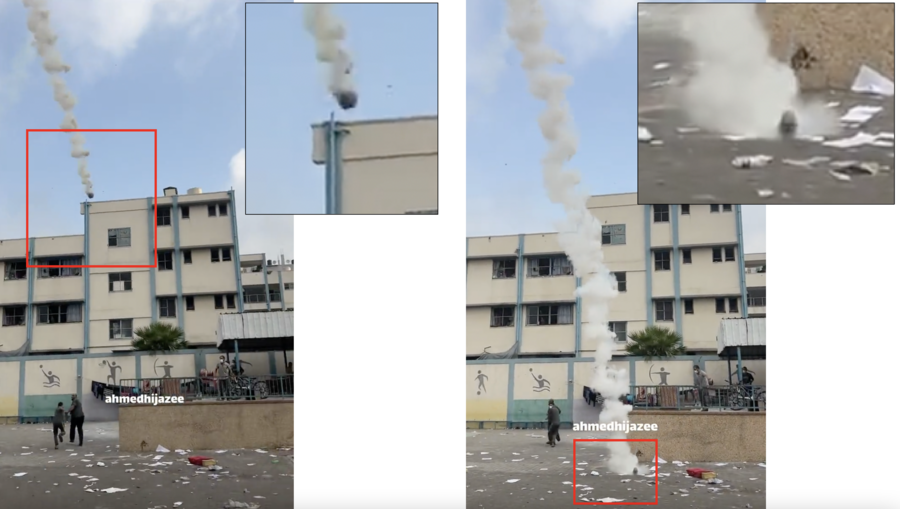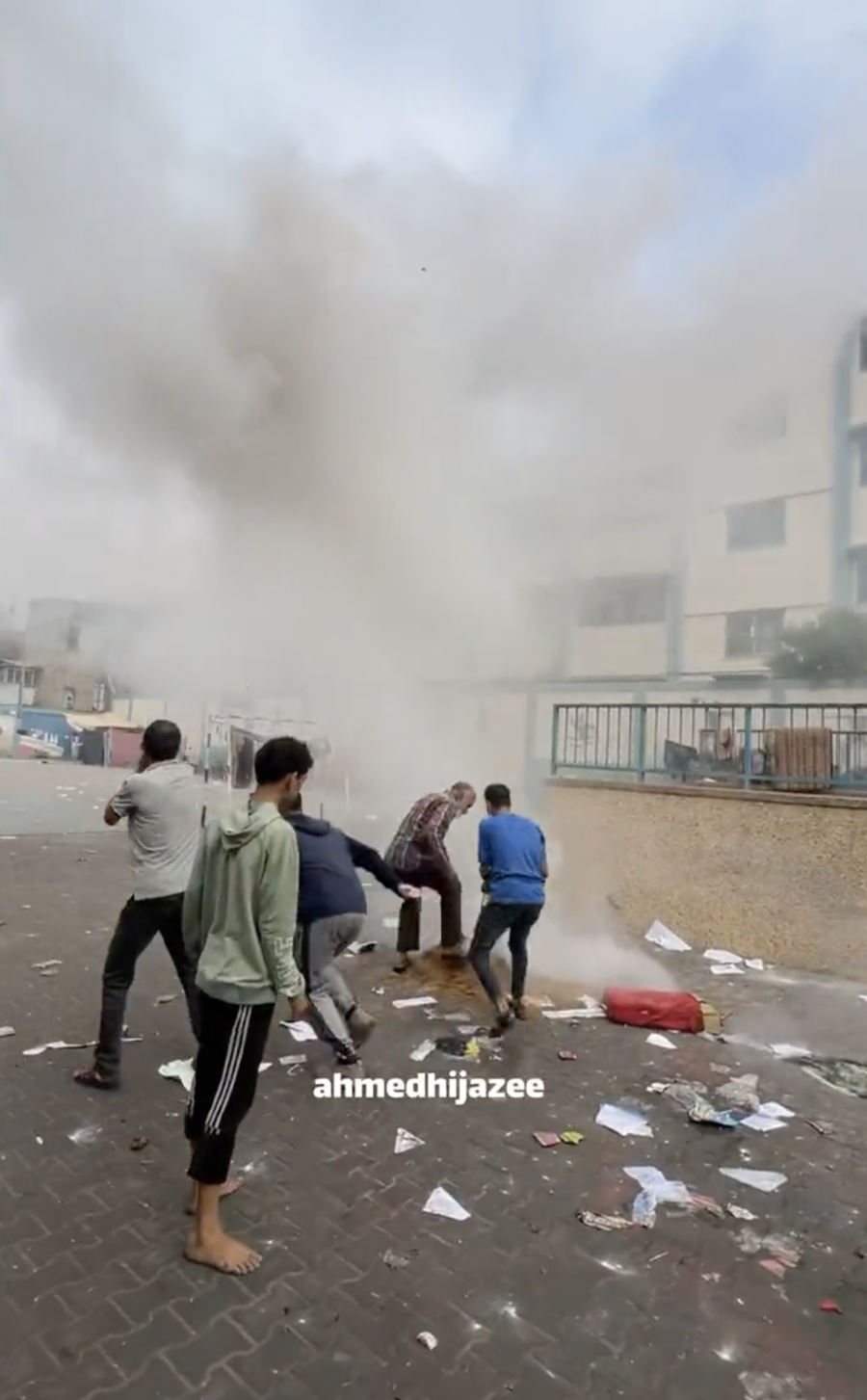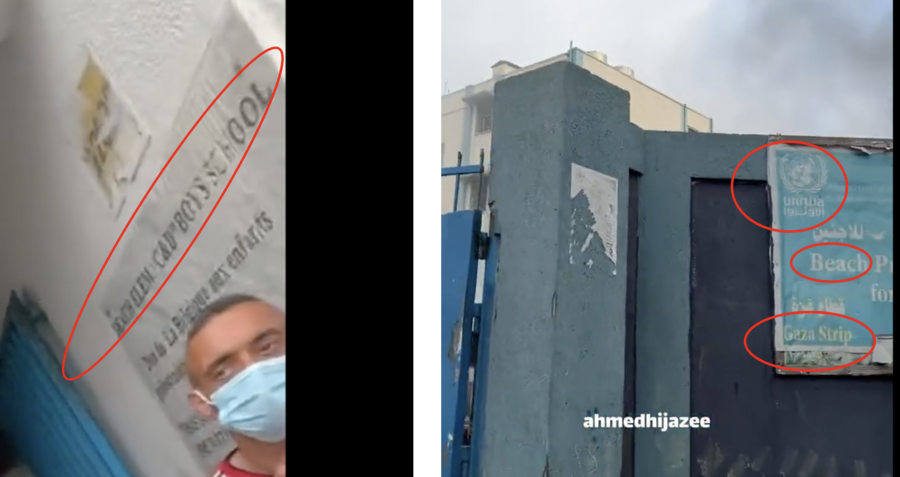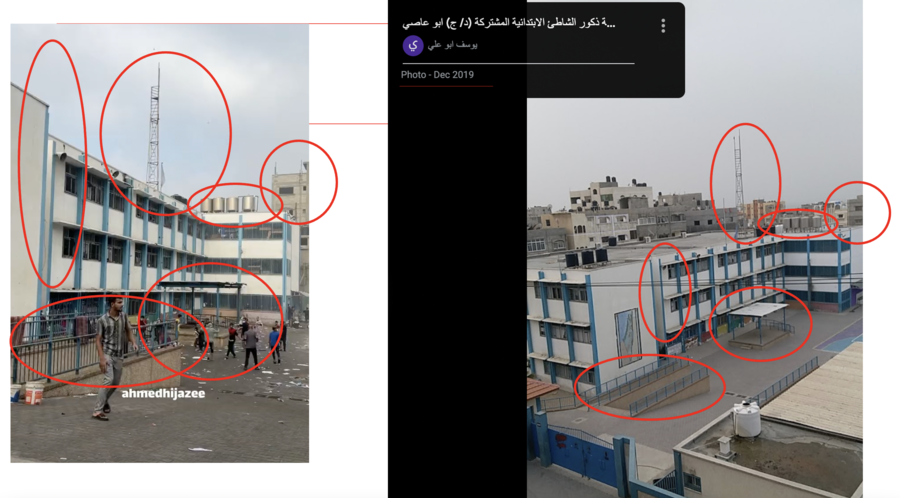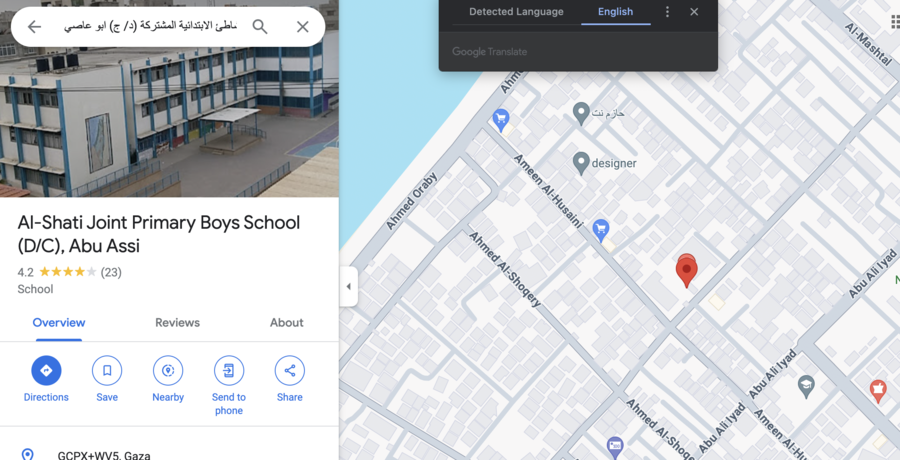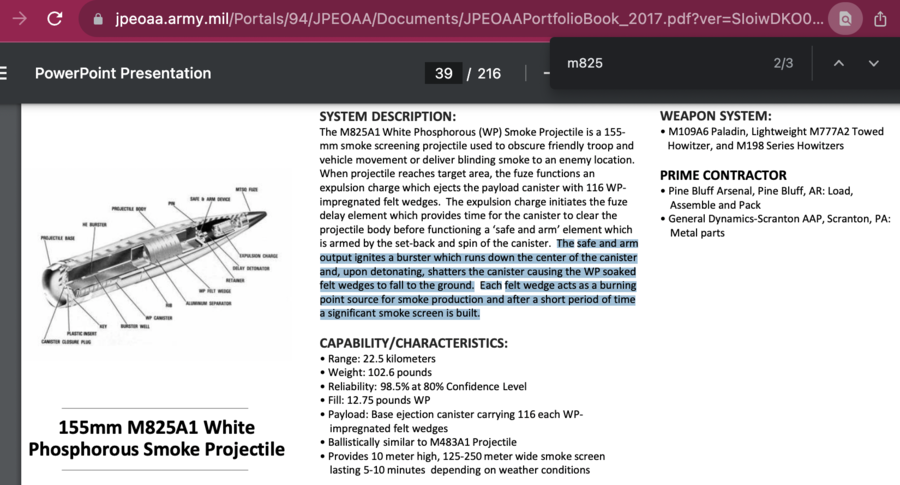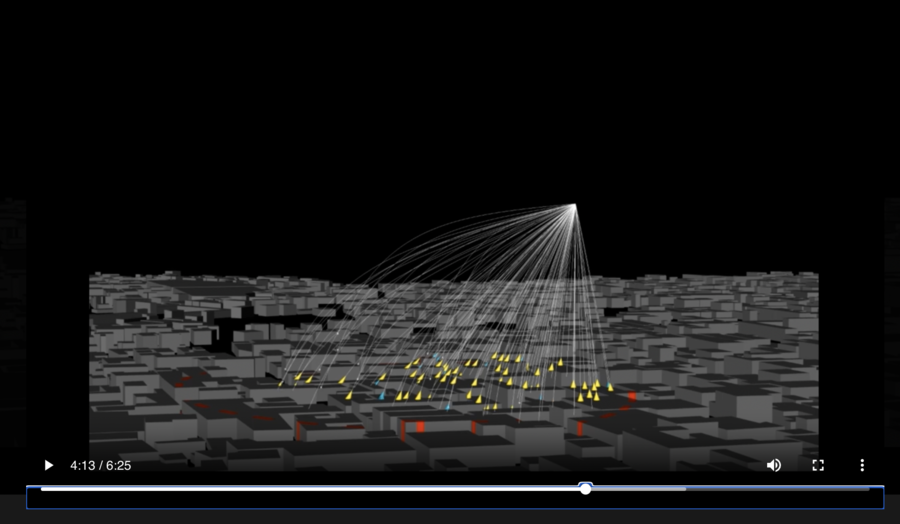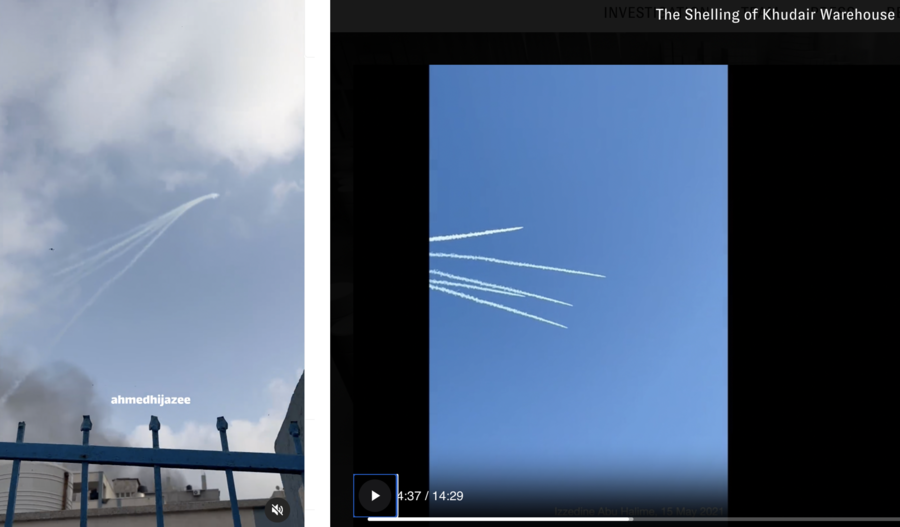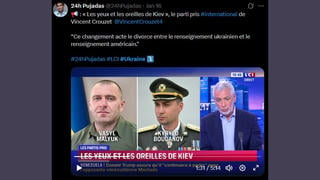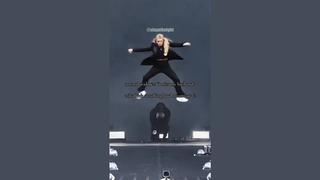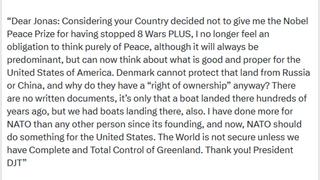
Does a viral video from Gaza prove another case of white phosphorus use by the Israel Defense Forces during the Hamas-Israel war in the fall of 2023? No, that's not true: The specific shots of what was claimed to be white phosphorus projectiles hitting a United Nations school near Al Shati, also known as the Beach Camp, in Gaza, do not look consistent with the appearance and impact of this kind of shells. A munitions expert confirmed that to Lead Stories. As of this writing, the United Nations Relief and Works Agency for Palestine Refugees could not verify the use of white phosphorus during this specific event.
The story originated from a post (archived here) published on Instagram on November 2, 2023. The caption opened:
The Israeli occupation targeted the UNRWA schools where thousands of displaced people were sheltering with white phosphorus and artillery shells in the Beach camp in Gaza City.
This is what it looked like at the time of writing:
(Source: Instagram screenshot taken on Thu Nov 2 17:54:16 2023 UTC)
The first thing that appears in the frame is the face of a male narrator wearing a black T-shirt. At the 00:00 mark, before the viewers get to see a scene, he says of the United Nations Relief and Works Agency (UNRWA), as translated from Arabic by Lead Stories staff:
The Israeli occupation targeted a school belonging to the agency (UNRWA) with phosphorous, here it is, phosphorous. Schools like this shelter thousands of displaced people.
Then, the video shows a cylinder-shaped object landing in front of the camera, leaving a single smoke trail behind:
(Sources: Instagram screenshot taken on Thu Nov 2 15:32:12 2023 UTC; Instagram screenshot taken on Fri Nov 3 18:40:23 UTC 2023; composite image by Lead Stories)
The next shots captured people rushing to cover that object with what looks like sand and dirt:
(Source: Instagram screenshot taken on Fri Nov 3 18:49:31 2023 UTC)
At the 00:29 mark, the narrator moves closer to the item on the ground, at that point fully covered. He continues, as translated from Arabic by Lead Stories staff:
That is the only way to put down phosphorous.
The video contains visual clues indicating that it was filmed at one of the UN schools not far from the Beach Camp in Gaza:
(Sources: Instagram screenshot taken on Thu Nov 2 15:34:34 2023 UTC; Instagram screenshot taken on Thu Nov 2 15:54:44 UTC 2023; composite image by Lead Stories)
Lead Stories geolocated the school based on the appearance of the schoolyard that matched a 2019 photo on Google Maps (archived here) showing the same building, with the same two structures in front of it. The location of the metal tower in the background as well as other matching details further confirmed the place (archived here) where the scene was videotaped.
(Sources: Instagram screenshot taken on Nov 3 04:02:10 UTC 2023; Google Maps screenshot taken on Nov 2 19:19:20 UTC 2023; composite image by Lead Stories)
(Source: Google Maps screenshot taken on Thu Nov 2 17:32:43 2023 UTC; the page was automatically translated by Chrome)
A November 2, 2023, UNRWA statement (archived here) confirmed that the school was damaged in the previous 24 hours.
When asked if the agency has any information to confirm or deny the use of white phosphorus in this particular incident, a UNRWA representative wrote on WhatsApp on November 3, 2023:
...sorry we do not have information on this at this stage.
As of November 6, 2023, the agency still has not confirmed the alleged use of white phosphorus at the Beach Camp.
On November 2, 2023, Chris Cobb-Smith, a former British army major and weapons expert, responded to Lead Stories' questions via a message on LinkedIn, addressing this fragment from the video:
Not WP, it's what is known as Smoke BE, smoke base ejection
Not dangerous, it produces a slow build up smoke for tactical manoeuvring
Answering a follow-up question, he continued, identifying specific models of munition:
Smoke BE is M116
Smoke WP is M825
Just like white phosphorus munitions, base-ejection projectiles can be fired from 155mm artillery but white phosphorus munitions function differently, destroying the canister.
A 2017 U.S. Army's Joint Program Executive Office for Armaments and Ammunition brochure (archived here) described one of them, M825A1:
(Source: Jpeoaa.army.mil screenshot taken on Mon Nov 6 17:00:30 2023 UTC)
Thus, it's impossible to "kill phosphorus" on the ground by the method seen in the video.
White phosphorus is a highly toxic, easily inflammable substance that ignites upon contact with air. According to the CDC website (archived here), it may not only cause severe respiratory issues but also deep burns if it touches the skin or eyes.
If assumed that as a result of living in a conflict zone, civilians have learned to distinguish between different kinds of munitions to be able to quickly name them, it is unclear why the video shows people running toward the source of the danger, not away from it.
Furthermore, the footage lacks a telling sign of the white phosphorus use.
Dozens of trails produced by WP munitions create a characteristic imprint in the sky, as seen, for example, in the Forensic Architecture video discussing previous cases:
(Source: Forensic Architecture screenshot taken on Mon Nov 6 13:02:41 2023 UTC)
In mid-October 2023, stock images of Israeli soldiers (for example, here) showed them in possession of light-green projectiles whose markings marched the description of WP munitions (archived here.)
Human Rights Watch (archived here), Amnesty International (archived here) and the Washington Post (archived here) concluded that the footage from the conflict zone confirms at least several instances of white phosphorus use by the Israeli forces.
However, this particular incident was not named as such, as of this writing.
The video in question does show some trails in the sky but, unlike in the images watchdog organizations pointed to, those wedges look countable, which is more consistent with the use of M150 -- a non-WP Israeli smoke projectile that leaves only five trails. Seen in the 2019 brochure of the Israeli firm Elbit Systems on page 22 (archived here), it was alleged by Forensic Architecture that Israel already used in 2021:
(Sources: Instagram screenshot taken on Mon Nov 6 13:33:22 2023 UTC; Forensic Architecture screenshot taken on 13:26:49 2023 UTC; composite image by Lead Stories)
According to HRW (archived here), Israel fired "200 ground-launched white phosphorus munitions" between December 27, 2008, and January 18, 2009, during Operation Cast Lead, but in 2013, the IDF said it was working on new non-WP smoke projectiles, simultaneously noting that "the new shells are intended to gradually replace the current smoke shells as the primary means employed by the IDF [Israel Defense Forces] for screening purposes."
In the fall of 2023, the IDF initially firmly denied the allegations related to the ongoing war, but on November 2, 2023, its representative told CNN that while the Israeli army does not use white phosphorus munitions in densely populated areas, "certain exceptions" are still applicable.
The use of white phosphorus is not universally banned under international laws. However, since it is an incendiary weapon, it is considered controversial because it may cause severe damage to civilians when used in densely populated areas.
Other Lead Stories fact checks of claims related to the 2023 Hamas-Israel conflict can be read here.


